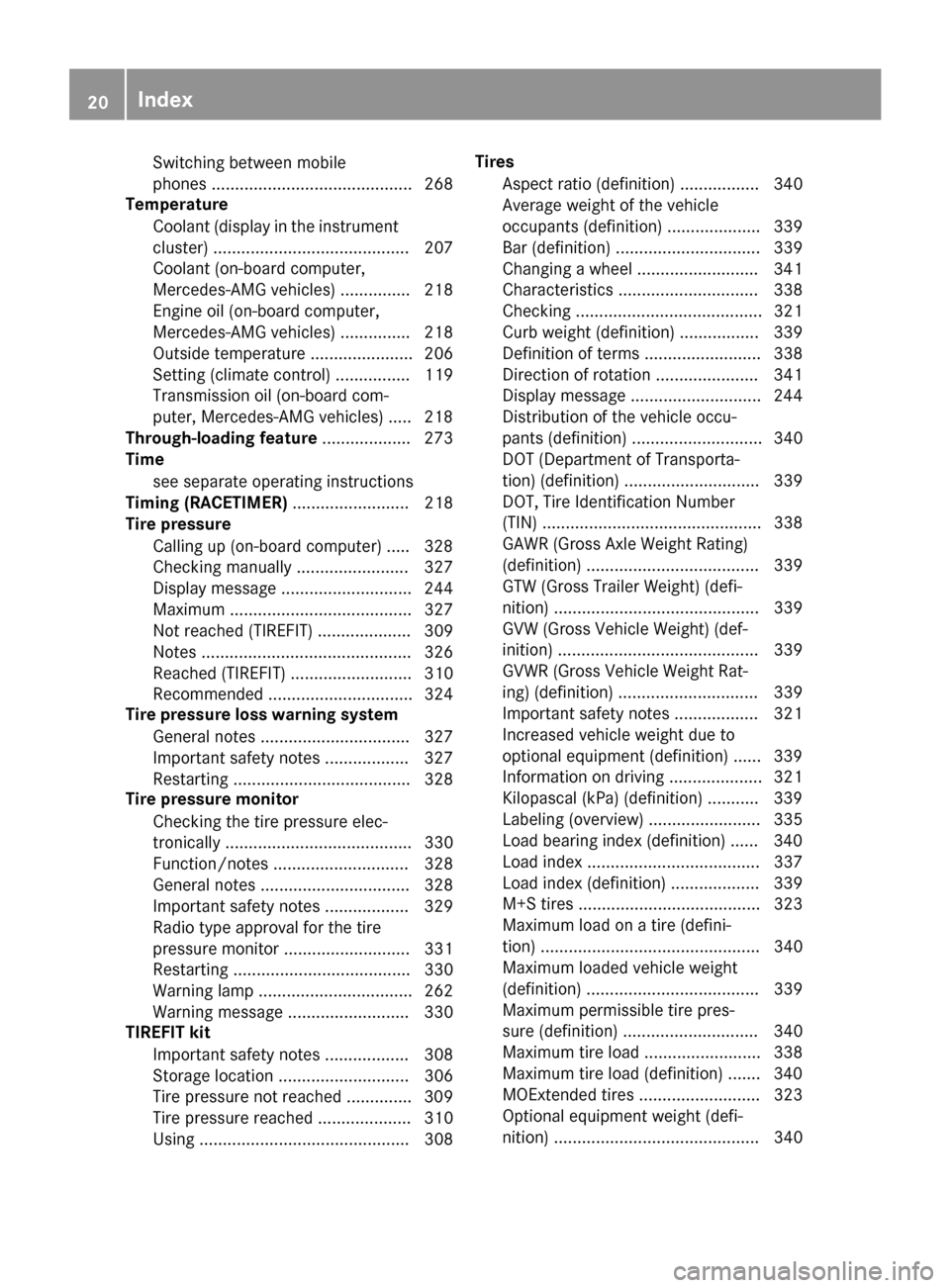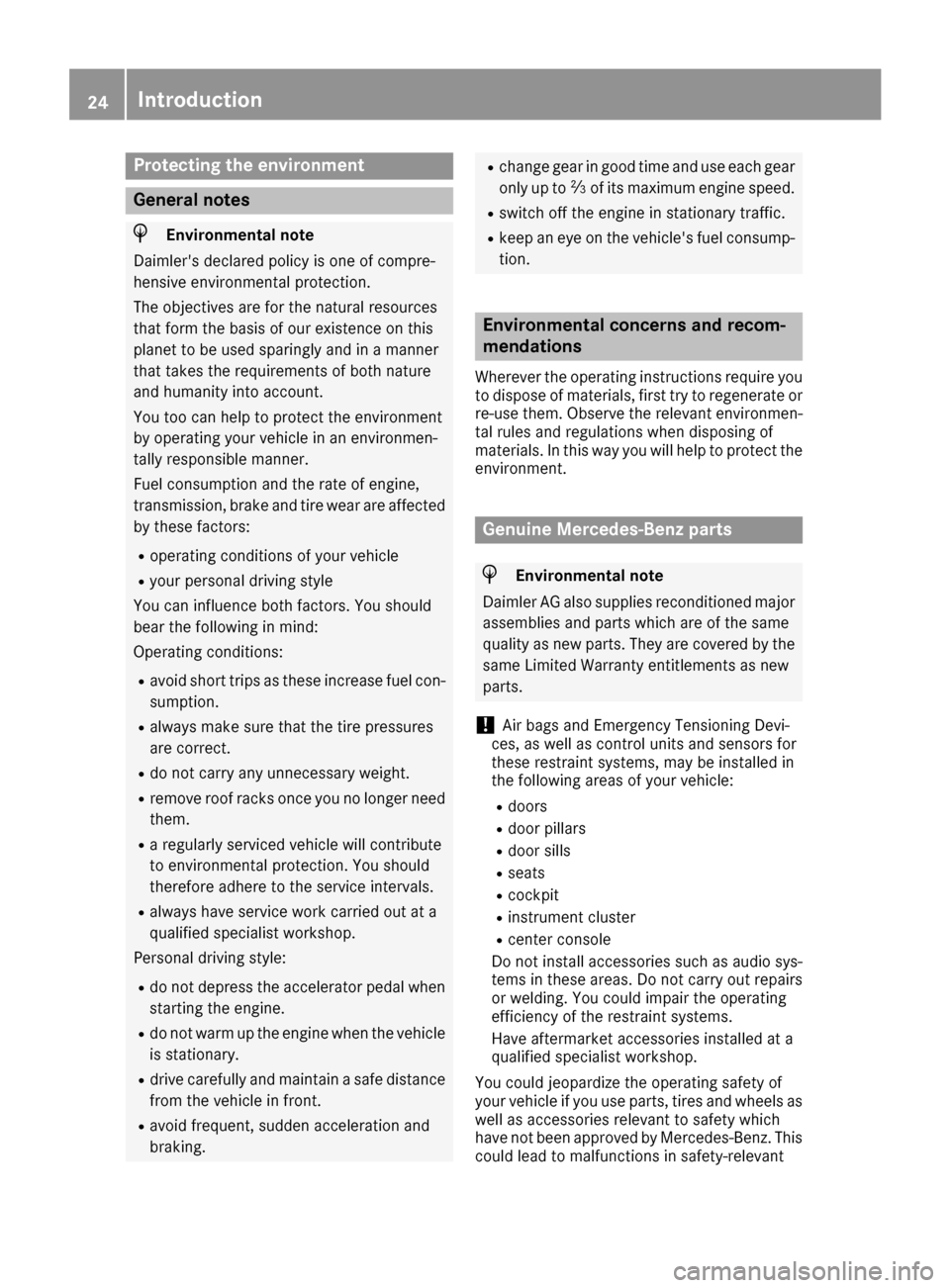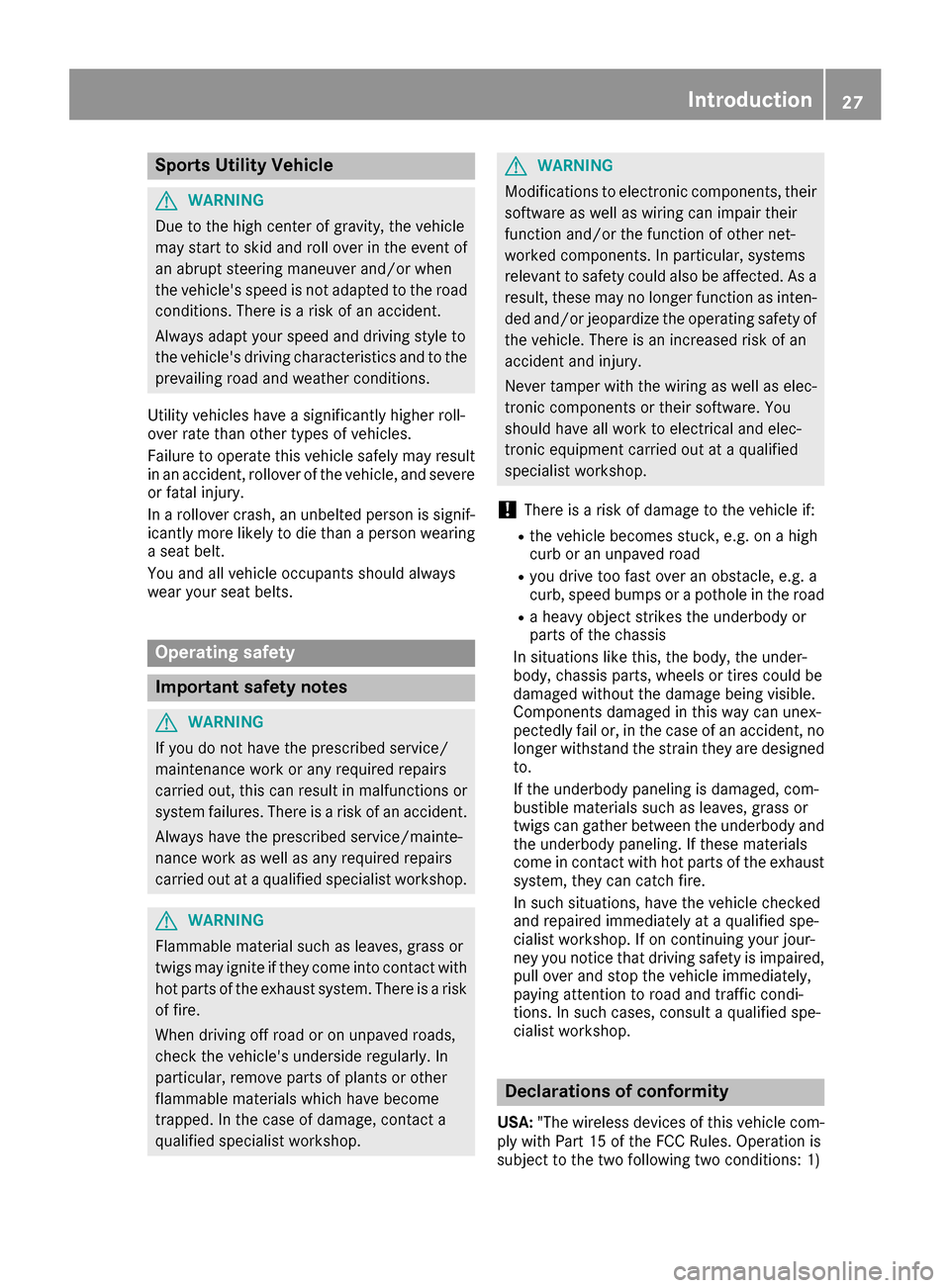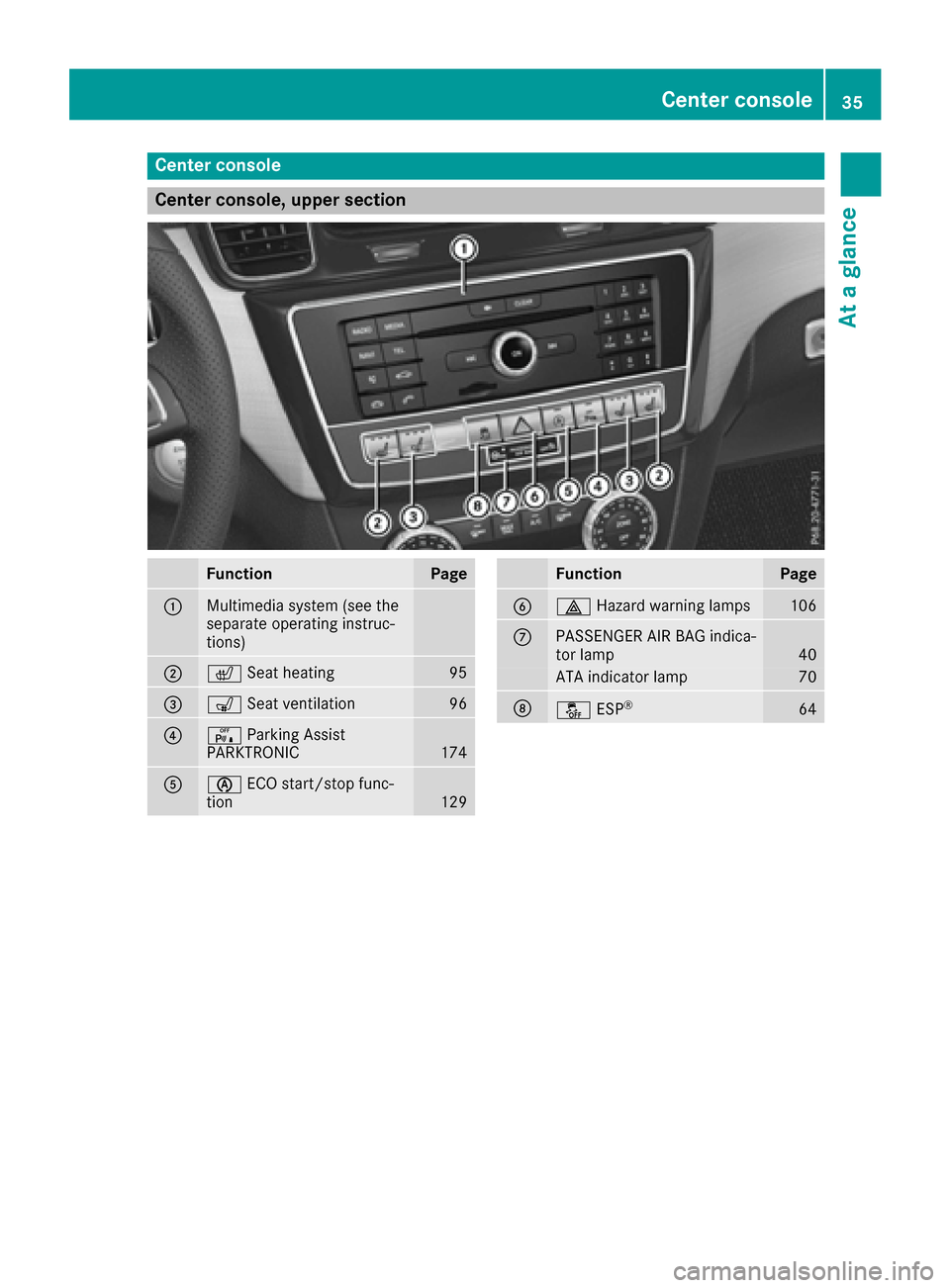2017 MERCEDES-BENZ GLE COUPE Start
[x] Cancel search: StartPage 22 of 366

Switching between mobile
phones ........................................... 268
Temperature
Coolant (display in the instrument
cluster) .......................................... 207
Coolant (on-board computer,
Mercedes-AMG vehicles) ............... 218
Engine oil (on-board computer,
Mercedes-AMG vehicles) ............... 218
Outside temperature ...................... 206
Setting (climate control) ................ 119
Transmission oil (on-board com-
puter, Mercedes-AMG vehicles) ..... 218
Through-loading feature ................... 273
Time
see separate operating instructions
Timing (RACETIMER) ......................... 218
Tire pressure
Calling up (on-board computer) ..... 328
Checking manually ........................ 327
Display message ............................ 244
Maximum ....................................... 327
Not reached (TIREFIT) .................... 309
Notes ............................................. 326
Reached (TIREFIT) .......................... 310
Recommended ............................... 324
Tire pressure loss warning system
General notes ................................ 327
Important safety notes .................. 327
Restarting ...................................... 328
Tire pressure monitor
Checking the tire pressure elec-
tronically ........................................ 330
Function/notes ............................. 328
General notes ................................ 328
Important safety notes .................. 329
Radio type approval for the tire
pressure monitor ........................... 331
Restarting ...................................... 330
Warning lamp ................................. 262
Warning message .......................... 330
TIREFIT kit
Important safety notes .................. 308
Storage location ............................ 306
Tire pressure not reached .............. 309
Tire pressure reached .................... 310
Using ............................................. 308 Tires
Aspect ratio (definition) ................. 340
Average weight of the vehicle
occupants (definition) .................... 339
Bar (definition) ............................... 339
Changing a wheel .......................... 341
Characteristics .............................. 338
Checking ........................................ 321
Curb weig ht (
definition) ................. 339
Definition of terms ......................... 338
Direction of rotation ...................... 341
Display message ............................ 244
Distribution of the vehicle occu-
pants (definition) ............................ 340
DOT (Department of Transporta-
tion) (definition) ............................. 339
DOT, Tire Identification Number
(TIN) ............................................... 338
GAWR (Gross Axle Weight Rating)
(definition) ..................................... 339
GTW (Gross Trailer Weight) (defi-
nition) ............................................ 339
GVW (Gross Vehicle Weight) (def-
inition) ........................................... 339
GVWR (Gross Vehicle Weight Rat-
ing) (definition) .............................. 339
Important safety notes .................. 321
Increased vehicle weight due to
optional equipment (definition) ...... 339
Information on driving .................... 321
Kilopascal (kPa) (definition) ........... 339
Labeling (overview) ........................ 335
Load bearing index (definition) ...... 340
Load index ..................................... 337
Load index (definition) ................... 339
M+S tires ....................................... 323
Maximum load on a tire (defini-
tion) ............................................... 340
Maximum loaded vehicle weight
(definition) ..................................... 339
Maximum permissible tire pres-
sure (definition) ............................. 340
Maximum tire load ......................... 338
Maximum tire load (definition) ....... 340
MOExtended tires .......................... 323
Optional equipment weight (defi-
nition) ............................................ 340
20Index
Page 23 of 366

PSI (pounds per square inch) (def-
inition) ...........................................340
Replacing ....................................... 341
Service life ..................................... 322
Sidewall (definition) ....................... 340
Snow chains .................................. 323
Speed rating (definition) ................ 339
Storing ...........................................3 41
Structure and characteristics
(definition) ..................................... 338
Summer tires in winter .................. 323
Temperature .................................. 335
TIN (Tire Identification Number)
(definition) ..................................... 340
Tire bead (definition) ......................3 40
Tire pressure (definition) ................ 340
Tire pressures (recommended) ...... 339
Tire size (data) ............................... 345
Tire size designation, load-bearing
capacity, speed rating .................... 335
Tire tread ....................................... 322
Tire tread (definition) ..................... 340
Total load limit (definition) ............. 340
Traction ......................................... 334
Traction (definition) ....................... 340
Tread wear ..................................... 334
TWR (permissible trailer drawbar
noseweight) (definition) ................. 340
Uniform Tire Quality Grading
Standards ...................................... 334
Uniform Tire Quality Grading
Standards (definition) .................... 339
Wear indicator (definition) ............. 340
Wheel and tire combination ........... 345
Wheel rim (definition) .................... 339
see Flat tire
Top Tether ............................................ 57
Tow-starting
Emergency engine starting ............ 318
Important safety notes .................. 316
Towing a trailer
Axle load, permissible .................... 361
Cleaning the trailer tow hitch ......... 304
Coupling up a trailer ...................... 202
Decoupling a traile r ....................... 204
Dri
ving tips .................................... 200
ESP
®(Electronic Stability Pro-
gram) ............................................... 66 Important safety notes .................. 199
Installing the ball coupling ............. 201
Lights display message .................. 233
Mounting dimensions .................... 361
Parking Assist PARKTRONIC .......... 174
Power supply ................................. 205
Pulling away with a trailer .............. 128
Removing the ball coupling ............ 205
Trailer loads ................................... 361
Towing away
Important safety guidelines ........... 316
Installing the towing eye ................ 317
Notes for 4MATIC vehicles ............ 318
Removing the towing eye ............... 317
Transporting the vehicle ................ 318
With both axles on the ground ....... 317
Towing eye ......................................... 306
Traffic reports
see also Digital Operator's Man-
ual .................................................. 263
Traffic Sign Assist
Display message ............................ 239
Function/notes ............................. 190
Important safety notes .................. 190
Instrument cluster display ............. 190
Trailer coupling
see Towing a trailer
Trailer loads and drawbar nose-
weights ............................................... 204
Trailer towing
Active Blind Spot Assist ................. 197
Active Lane Keeping Assist ............ 199
Blind Spot Assist ............................ 193
Permissible trailer loads and
drawbar noseweights ..................... 204
Transfer case ..................................... 139
Transmission
see Automatic transmission
Transmission position display ......... 134
Transporting the vehicle .................. 318
Traveling uphill
Brow of hill ..................................... 156
Driving downhill ............................. 157
Maximum gradient-climbing capa-
bility ............................................... 156
Trim pieces (cleaning instruc-
tions) .................................................. 305
Index21
Page 26 of 366

Protecting the environment
General notes
HEnvironmental note
Daimler's declared policy is one of compre-
hensive environmental protection.
The objectives are for the natural resources
that form the basis of our existence on this
planet to be used sparingly and in a manner
that takes the requirements of both nature
and humanity into account.
You too can help to protect the environment
by operating your vehicle in an environmen-
tally responsible manner.
Fuel consumption and the rate of engine,
transmission, brake and tire wear are affected by these factors:
Roperating conditions of your vehicle
Ryour personal driving style
You can influence both factors. You should
bear the following in mind:
Operating conditions:
Ravoid short trips as these increase fuel con-
sumption.
Ralways make sure that the tire pressures
are correct.
Rdo not carry any unnecessary weight.
Rremove roof racks once you no longer need
them.
Ra regularly serviced vehicle will contribute
to environmental protection. You should
therefore adhere to the service intervals.
Ralways have service work carried out at a
qualified specialist workshop.
Personal driving style:
Rdo not depress the accelerator pedal when
starting the engine.
Rdo not warm up the engine when the vehicle
is stationary.
Rdrive carefully and maintain a safe distance
from the vehicle in front.
Ravoid frequent, sudden acceleration and
braking.
Rchange gear in good time and use each gear
only up to Ôof its maximum engine speed.
Rswitch off the engine in stationary traffic.
Rkeep an eye on the vehicle's fuel consump-
tion.
Environmental concerns and recom-
mendations
Wherever the operating instructions require you
to dispose of materials, first try to regenerate or
re-use them. Observe the relevant environmen-
tal rules and regulations when disposing of
materials. In this way you will help to protect the
environment.
Genuine Mercedes-Benz parts
HEnvironmental note
Daimler AG also supplies reconditioned major
assemblies and parts which are of the same
quality as new parts. They are covered by the
same Limited Warranty entitlements as new
parts.
!Air bags and Emergency Tensioning Devi-
ces, as well as control units and sensors for
these restraint systems, may be installed in
the following areas of your vehicle:
Rdoors
Rdoor pillars
Rdoor sills
Rseats
Rcockpit
Rinstrument cluster
Rcenter console
Do not install accessories such as audio sys-
tems in these areas. Do not carry out repairs or welding. You could impair the operating
efficiency of the restraint systems.
Have aftermarket accessories installed at a
qualified specialist workshop.
You could jeopardize the operating safety of
your vehicle if you use parts, tires and wheels as
well as accessories relevant to safety which
have not been approved by Mercedes-Benz. This
could lead to malfunctions in safety-relevant
24Introduction
Page 29 of 366

Sports Utility Vehicle
GWARNING
Due to the high center of gravity, the vehicle
may start to skid and roll over in the event of
an abrupt steering maneuver and/or when
the vehicle's speed is not adapted to the road
conditions. There is a risk of an accident.
Always adapt your speed and driving style to
the vehicle's driving characteristics and to the
prevailing road and weather conditions.
Utility vehicles have a significantly higher roll-
over rate than other types of vehicles.
Failure to operate this vehicle safely may result
in an accident, rollover of the vehicle, and severe
or fatal injury.
In a rollover crash, an unbelted person is signif-
icantly more likely to die than a person wearing
a seat belt.
You and all vehicle occupants should always
wear your seat belts.
Operating safety
Important safety notes
GWARNING
If you do not have the prescribed service/
maintenance work or any required repairs
carried out, this can result in malfunctions or system failures. There is a risk of an accident.
Always have the prescribed service/mainte-
nance work as well as any required repairs
carried out at a qualified specialist workshop.
GWARNING
Flammable material such as leaves, grass or
twigs may ignite if they come into contact with
hot parts of the exhaust system. There is a risk of fire.
When driving off road or on unpaved roads,
check the vehicle's underside regularly. In
particular, remove parts of plants or other
flammable materials which have become
trapped. In the case of damage, contact a
qualified specialist workshop.
GWARNING
Modifications to electronic components, their software as well as wiring can impair their
function and/or the function of other net-
worked components. In particular, systems
relevant to safety could also be affected. As a
result, these may no longer function as inten-
ded and/or jeopardize the operating safety of
the vehicle. There is an increased risk of an
accident and injury.
Never tamper with the wiring as well as elec-
tronic components or their software. You
should have all work to electrical and elec-
tronic equipment carried out at a qualified
specialist workshop.
!There is a risk of damage to the vehicle if:
Rthe vehicle becomes stuck, e.g. on a high
curb or an unpaved road
Ryou drive too fast over an obstacle, e.g. a
curb, speed bumps or a pothole in the road
Ra heavy object strikes the underbody or
parts of the chassis
In situations like this, the body, the under-
body, chassis parts, wheels or tires could be
damaged without the damage being visible.
Components damaged in this way can unex-
pectedly fail or, in the case of an accident, no longer withstand the strain they are designed
to.
If the underbody paneling is damaged, com-
bustible materials such as leaves, grass or
twigs can gather between the underbody and
the underbody paneling. If these materials
come in contact with hot parts of the exhaustsystem, they can catch fire.
In such situations, have the vehicle checked
and repaired immediately at a qualified spe-
cialist workshop. If on continuing your jour-
ney you notice that driving safety is impaired,
pull over and stop the vehicle immediately,
paying attention to road and traffic condi-
tions. In such cases, consult a qualified spe-
cialist workshop.
Declarations of conformity
USA: "The wireless devices of this vehicle com-
ply with Part 15 of the FCC Rules. Operation is
subject to the two following two conditions: 1)
Introduction27
Z
Page 30 of 366

These devices may not cause harmful interfer-
ence, and 2) These devices must accept any
interference received, including interference
that may cause undesired operation. Changes
or modifications not expressly approved by the
party responsible for compliance could void the
user’s authority to operate the equipment."
Canada:"The wireless devices of this vehicle
comply with Industry Canada license-exempt
RSS standard(s). Operation is subject to the fol-
lowing two conditions: (1) These devices may
not cause interference, and (2) These devices
must accept any interference, including inter-
ference that may cause undesired operation of
the device."
Diagnostics connection
The diagnostics connection is only intended for
the connection of diagnostic equipment at a
qualified specialist workshop.
GWARNING
If you connect equipment to a diagnostics
connection in the vehicle, it may affect the
operation of vehicle systems. As a result, the
operating safety of the vehicle could be affec-
ted. There is a risk of an accident.
Only connect equipment to a diagnostics con-
nection in the vehicle, which is approved for
your vehicle by Mercedes-Benz.
GWARNING
Objects in the driver's footwell can restrict the pedal travel or obstruct a depressed pedal.
The operating and road safety of the vehicle is
jeopardized. There is a risk of an accident.
Make sure that all objects in the vehicle are
stowed correctly, and that they cannot enter
the driver's footwell. Install the floormats
securely and as specified in order to ensure
sufficient clearance for the pedals. Do not use
loose floormats and do not place floormats on
top of one another.
!If the engine is switched off and equipment
on the diagnostics connection is used, the
starter battery may discharge.
Connecting equipment to the diagnostics con-
nection can lead to emissions monitoring infor- mation being reset, for example. This may lead
to the vehicle failing to meet the requirements of
the next emissions test during the main inspec-
tion.
Qualified specialist workshop
An authorized Mercedes-Benz Center is a quali-
fied specialist workshop. It has the necessary
specialist knowledge, tools and qualifications to
correctly carry out the work required on your
vehicle. This is especially the case for work rel-
evant to safety.
Observe the notes in the Maintenance Booklet.
Always have the following work carried out at an
authorized Mercedes-Benz Center:
Rwork relevant to safety
Rservice and maintenance work
Rrepair work
Ralterations, installation work and modifica-
tions
Rwork on electronic components
Correct use
If you remove any warning stickers, you or oth-
ers could fail to recognize certain dangers.
Leave warning stickers in position.
Observe the following information when driving
your vehicle:
Rthe safety notes in this manual
Rthe vehicle technical data
Rtraffic rules and regulations
Rlaws and safety standards pertaining to motor
vehicles
Problems with your vehicle
If you should experience a problem with your
vehicle, particularly one that you believe may
affect its safe operation, we urge you to contact
an authorized Mercedes-Benz Center immedi-
ately to have the problem diagnosed and recti-
fied. If the problem is not resolved to your sat-
isfaction, please discuss the problem again with
the Mercedes-Benz Center or, if necessary, con-
tact us at one of the following addresses.
In the USA
Customer Assistance Center
28Introduction
Page 34 of 366

Cockpit
FunctionPage
:Steering wheel paddle shift-
ers136
;Combination switch105
=Instrument cluster33
?Horn
ADIRECT SELECT lever132
BParking Assist PARKTRONIC
warning display175
COverhead control panel37
DClimate control systems113
EIgnition lock125
Start/Stop button125
FunctionPage
FAdjusts the steering wheel
manually97
GAdjusts the steering wheel
electrically97
Steering wheel heating98
HCruise control lever158
IOpens the hood294
JDiagnostics connection28
KElectric parking brake146
LLight switch104
32Cockpit
At a glance
Page 37 of 366

Center console
Center console, upper section
FunctionPage
:Multimedia system (see the
separate operating instruc-
tions)
;cSeat heating95
=sSeat ventilation96
?cParking Assist
PARKTRONIC174
Aè ECO start/stop func-
tion129
FunctionPage
B£ Hazard warning lamps106
CPASSENGER AIR BAG indica-
tor lamp40
ATA indicator lamp70
DåESP®64
Center console35
At a glance
Page 41 of 366

Panic alarm
XTo activate:press!button :for
approximately one second.
A visual and audible alarm is triggered if the
alarm system is armed.
XTo deactivate: press!button :again.
or
XInsert the SmartKey into the ignition lock.
or, on vehicles with KEYLESS‑GO:
XPress the Start/Stop button.
The SmartKey must be in the vehicle.
Occupant safety
Introduction to the restraint system
The restraint system can reduce the risk of vehi- cle occupants coming into contact with parts of
the vehicle's interior in the event of an accident.
The restraint system can also reduce the forces to which vehicle occupants are subjected during
an accident.
The restraint system comprises:
Rseat belt system
Rair bags
Rchild restraint system
Rchild seat securing systems
The components of the restraint system work in
conjunction with each other. They can only
deploy their protective function if, at all times, all vehicle occupants:
Rhave fastened their seat belts correctly
(Ypage 42)
Rhave adjusted their seat and head restraint
properly (Ypage 91). As the driver, you also have to make sure that
the steering wheel is adjusted correctly.
Observe the information relating to the correct
driver's seat position (
Ypage 91).
You also have to make sure that an air bag can
inflate properly if deployed (
Ypage 44).
An air bag supplements a correctly worn seat
belt. As an additional safety device, the air bag
increases the level of protection for vehicle
occupants in the event of an accident. For exam-
ple, if, in the event of an accident, the protection
offered by the seat belt is sufficient, the air bags are not deployed. When an accident occurs, only
the air bags that increase protection in that par-ticular accident situation are deployed. How-
ever, seat belts and air bags generally do not
protect against objects penetrating the vehicle
from the outside.
Information on restraint system operation can
be found under "Triggering of the Emergency
Tensioning Devices and air bags" (
Ypage 51).
For information on children traveling with you in
the vehicle and on child restraint systems, see
"Children in the vehicle" (
Ypage 55).
Important safety notes
GWARNING
Modifications to the restraint system may
cause it to no longer work as intended. The
restraint system may then not perform its
intended protective function and may fail in an
accident or trigger unexpectedly, for example.
This poses an increased risk of injury or even fatal injury.
Never modify parts of the restraint system.
Never tamper with the wiring, the electronic
components or their software.
If it is necessary to modify components of the
restraint system to accommodate a person
with disabilities, contact an authorized
Mercedes-Benz Center for details. USA only:
for further information contact our Customer
Assistance Center at 1-800-FOR-MERCedes
(1‑800‑367‑6372).
Mercedes-Benz recommends that you only use
driving aids which have been approved specifi-
cally for your vehicle by Mercedes-Benz.
Occupant safety39
Safety
Z